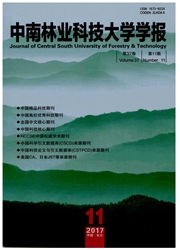

 中文摘要:
中文摘要:
以蕨类植物对马耳蕨为研究材料,对其孢子体和配子体的光合生理生态特性进行了比较研究。结果表明:(1)孢子体叶绿素a、叶绿素b、叶绿素(a+b)、类胡萝b素和总黄酮含量分别是配子体的2-31、3.12、2.58、1.71、1.26倍,均有极显著性差异(P〈0.01);(2)初始荧光、最大荧光、最大光能转化效率、光化学淬灭系数、PsII潜在光化学活性分别是配子体的1.33、1.41、1.03、0.97、1.06倍,差异极显著或显著;(3)随着光照强度的增加,对马耳蕨孢子体表观电子传递速率和非光化学淬灭系数上升幅度较配子体大;(4)当孢子体和配子体同时受到短时强光照射时,孢子体最大光能转化效率下降了59.9%,配子体下降了69.3%,次日清晨孢子体最大光能转化效率恢复至初始值的81.4%,配子体仅恢复初始值的65.5%。以上结果说明对马耳蕨孢子体对光生境的适应能力较配子体强,当两者同处强光生境时,配子体较容易受到光抑制或光损伤危害。
 英文摘要:
英文摘要:
By taking Polystichum tsus-simense as the tested materials, the photosynthetic eco-physiological characteristics between its sporophyte and gametophyte were compared. The results show that (1) Contents of sporophyte Chl a, Chl b, Chl(a+b), carotenoids and total flavonoids of P tsus-simense were 3.21, 3.12, 2.58, 1.7 and 1.14 times to gametophyte respectively; (2) Values of sporophyte Fo, Fm, Fv/Fm, qP and Fv/Fo were 1.33, 1.41, 1.03, 0.97, 1.06 times to gametophyte respectively; (3) With light intensity increased, the values of sporophyte rETR and qN increased more than gametophyte, but there was no difference under low light intensity both of them; (4) Value of sporophyte Fv/Fm of sporophyte decreased by 59.9%, gametophyte decreased by 69.3% when suffered from a short-time photoinhibition both of them. next morning, compared to the initial value, the values of sporophyte Fv/Fm recovered to 81.4%, gametophyte just 65.5%; The present study found that P tsus-simense sporophyte would adapt well to high light habitat than gametophyte when both of them exposure to high light intensity.
 同期刊论文项目
同期刊论文项目
 同项目期刊论文
同项目期刊论文
 期刊信息
期刊信息
